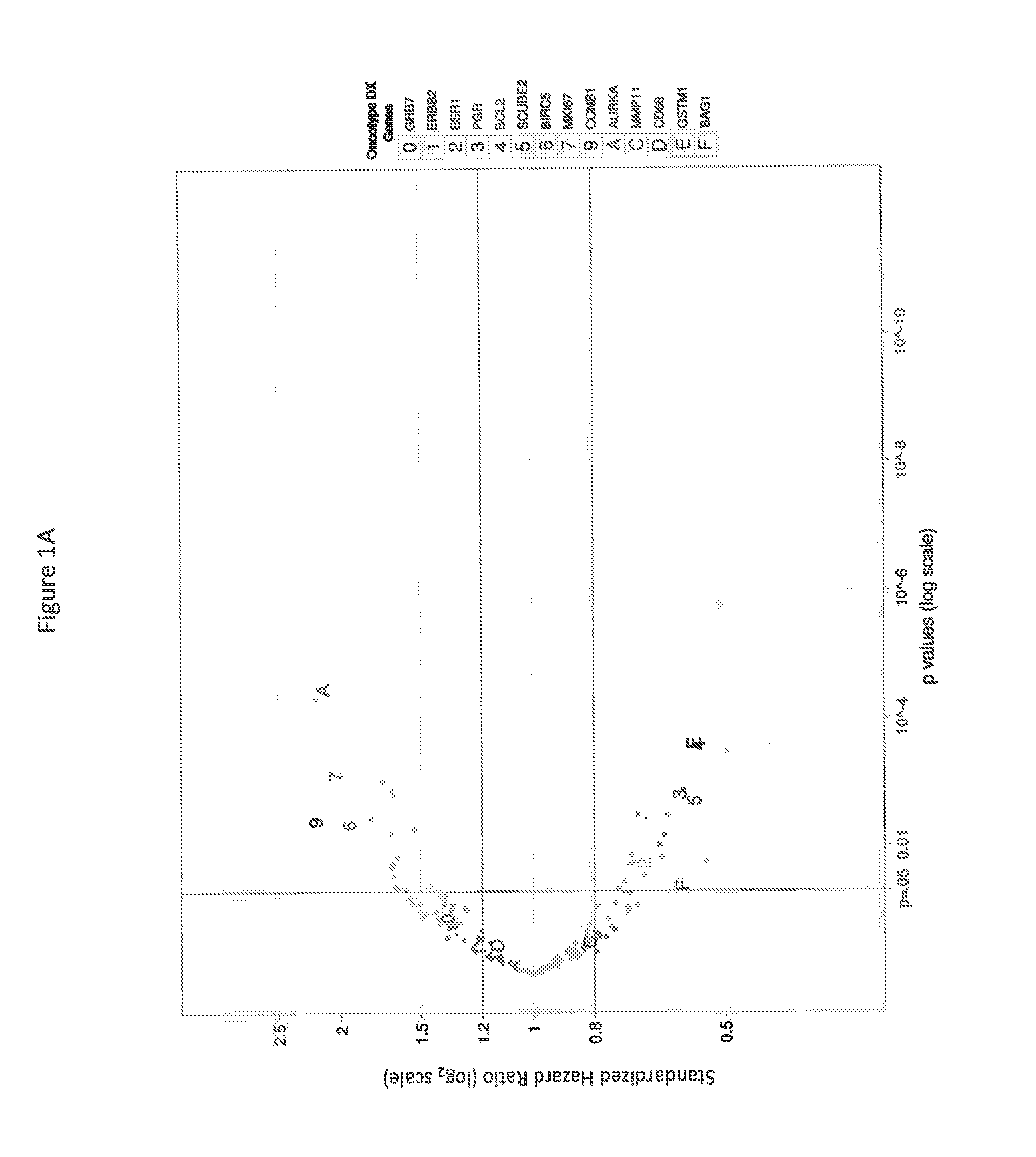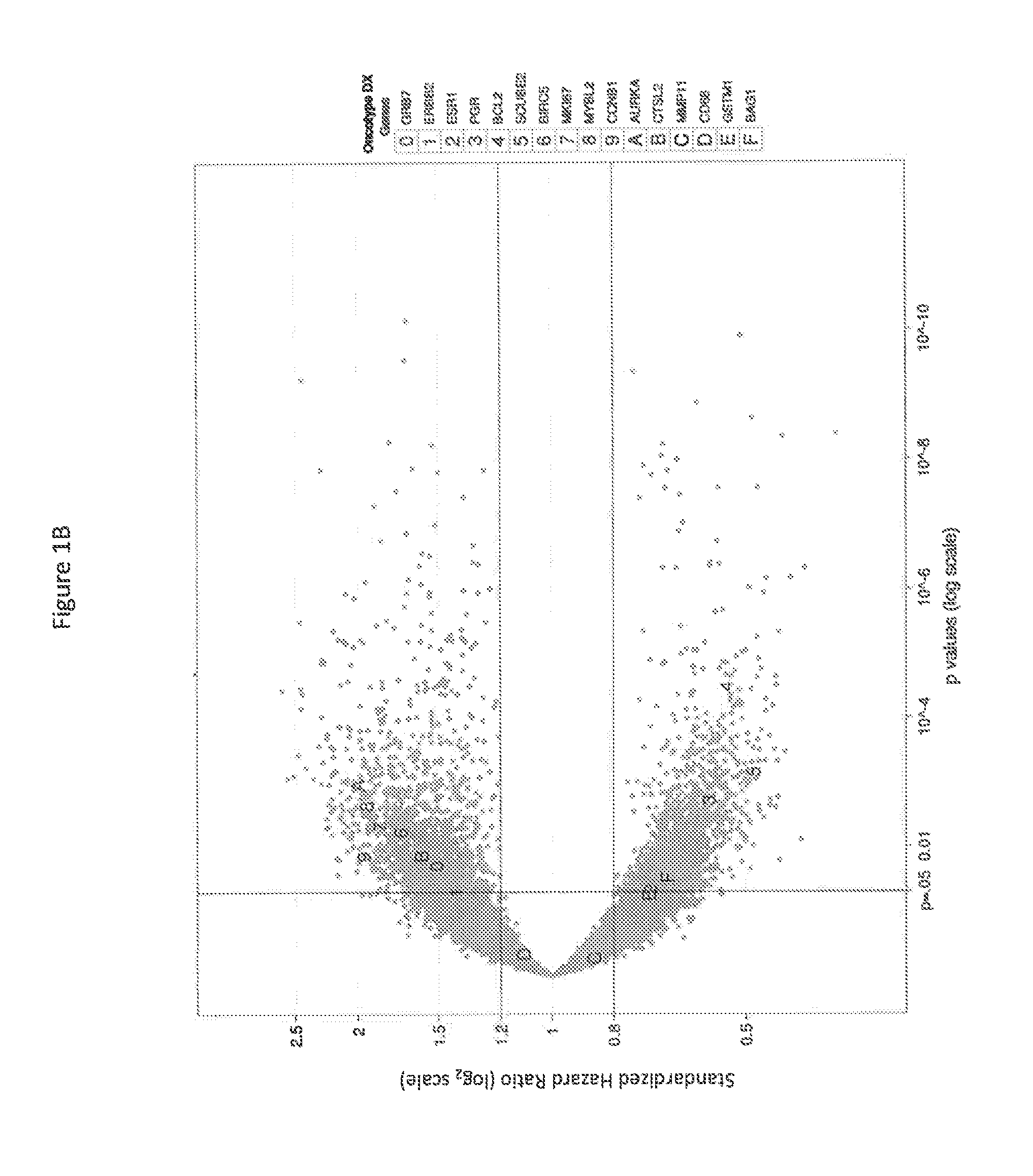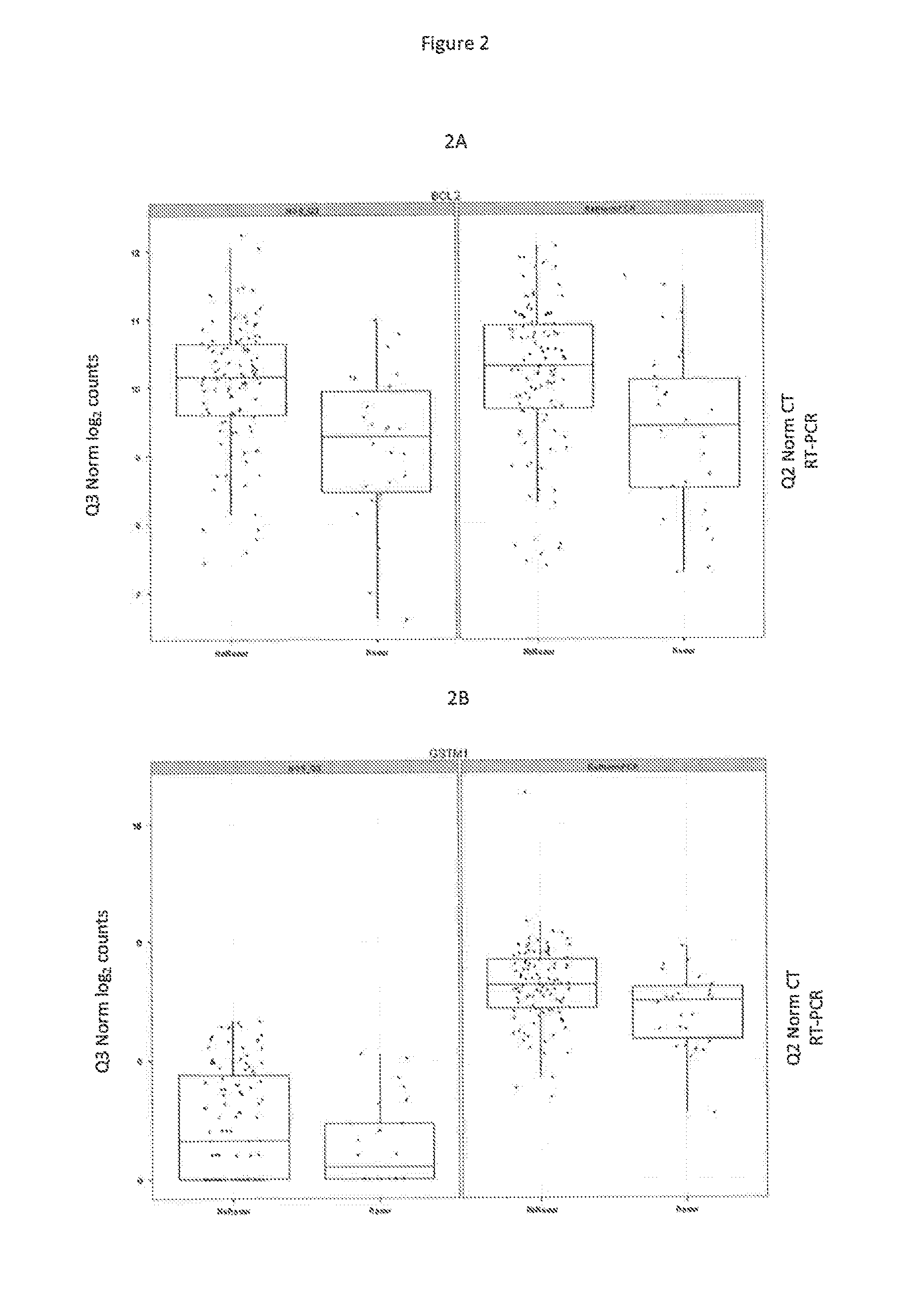Method of predicting breast cancer prognosis
- Summary
- Abstract
- Description
- Claims
- Application Information
AI Technical Summary
Benefits of technology
Problems solved by technology
Method used
Image
Examples
example 1
Materials and Methods
[0112]Patients
[0113]One hundred and thirty-six primary breast cancer FFPE tumor specimens with clinical outcomes were provided by Providence St. Joseph Medical Center (Burbank, Calif.), with institutional review board approval. The time to first recurrence of breast cancer or death due to breast cancer (including death due to unknown cause) was determined from these records. Patients who were still alive without breast cancer recurrence or who died due to known other causes were considered censored at the time of last follow-up or death. These tumor specimens were used for biomarker discovery in the development of the Oncotype DX® assay, See e.g., U.S. Pat. No. 7,081,340; S. Paik et al., The New England Journal of Medicine 351, 2817 (2004), For the present study, 136 specimens had adequate RNA remaining. Among the 136 patients, 26 experienced breast cancer recurrence or death due to breast cancer.
[0114]RNA-Seq Sample Preparation and Sequencing
[0115]Total RNA was...
example 2
Evaluation of Whole Transcriptome RNA-Seq as a Platform for Biomarker Discovery
[0127]Patient clinical characteristics are shown in Table 12. One-hundred and ten patients (81%) had no involved nodes. There was a mixture of chemotherapy and hormonal therapy usage. Estrogen receptor (ER) status was not included in patient records. Therefore, normalized ESR1 mRNA levels obtained in the present RNA-Seq study were used to identify 111 tumors as estrogen-receptor positive and 25 as estrogen-receptor negative. Use of RT-PCR rather than RNA-Seq for this purpose yielded similar but not identical results, identifying as ER+ two more patients, for a total of 113. Archive ages of FFPE tumor blocks ranged from 5 to 12.4 years (median 8.5 years).
[0128]RNA-Seq results were successfully generated for all 136 patients, with an average of 43 million median reads per patient (86 million median reads per Illumina Hiseq 2000 flow cell lane). Sixty-nine percent of these uniquely mapped to the human genome...
example 3
RefSeq Transcripts and Gene Networks that Associate with Risk of Breast Recurrence
[0132]There were 1307 RefSeqs associated with disease recurrence outcome at FDR <10% (Table 1). Because the reproducibility of within-sample transcript counts inevitably decreases as transcript abundance decreases, the impact of transcript abundance on initial biomarker discovery was evaluated. These 1307 RNAs were binned with respect to count abundance. Accounting for the 821 transcripts with maximum counts less than 5, which were deliberately excluded from analysis, rare transcripts (with less than 10 median counts) represent 28% of all RefSeq transcripts. The percent of RNAs identified decreases but is not dramatically different as median counts decrease from greater than 1,000 to 10-99. Even at median counts less than 10, the percent of RNAs identified fell by less than half compared to sequences present at higher abundance.
[0133]Among the 1307 identified RefSeq RNAs, many relate to recurrence with...
PUM
| Property | Measurement | Unit |
|---|---|---|
| Level | aaaaa | aaaaa |
Abstract
Description
Claims
Application Information
 Login to View More
Login to View More - R&D
- Intellectual Property
- Life Sciences
- Materials
- Tech Scout
- Unparalleled Data Quality
- Higher Quality Content
- 60% Fewer Hallucinations
Browse by: Latest US Patents, China's latest patents, Technical Efficacy Thesaurus, Application Domain, Technology Topic, Popular Technical Reports.
© 2025 PatSnap. All rights reserved.Legal|Privacy policy|Modern Slavery Act Transparency Statement|Sitemap|About US| Contact US: help@patsnap.com



